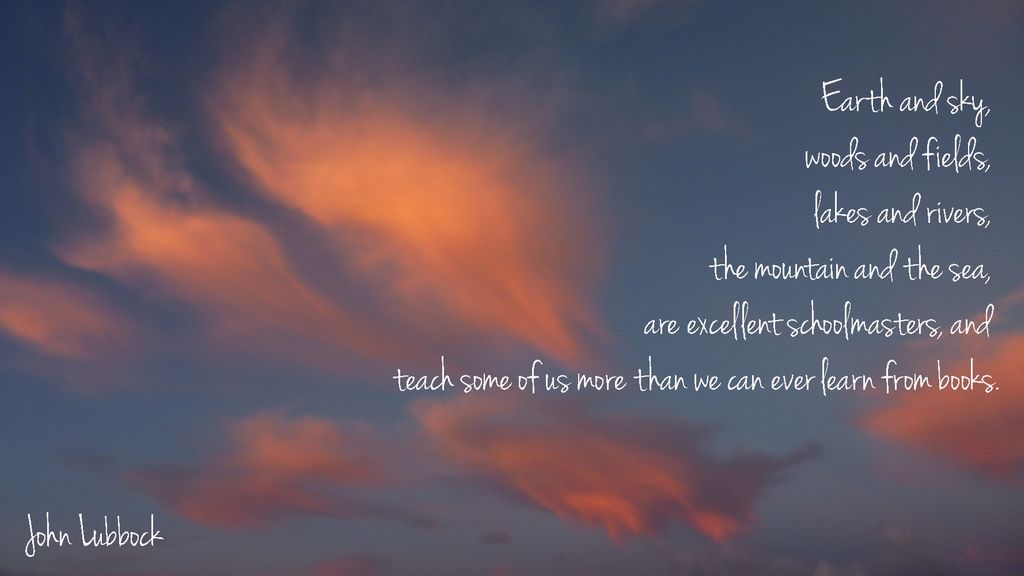Learning From Nature
May 16, 2019 • 14 views
If you find yourself exhausted and thrown off balance by your surroundings, a return to nature can help you reconnect with peace. Throughout the ages great minds been informed by Mother Nature, and have recognized the tremendous power of her wisdom.
Consider the element of water. It can fill up the space and shape of any containers. This is primary school science. But how many of us ever think of translating this ability to being adaptable? Water can exist in three forms: solid (ice), liquid (water) and gas (water vapour). How many of us have considered this concept as a form of re-adjustment and have used this to good measure in businessesin terms of creating/innovating new products and/or servicesto create new demand from existing/potential clients?
Water flows from a high level to the lowlands, which follows theuniversal law of gravity, which is in tune with businesses going along with the flow of current demand and supply. Water is pure in nature, which teaches one to be moral in conduct and fair in one’s business dealings with others. Water can be purified, which means that correcting our mistakes is possible. All these examples only serve to relate to one element of the universe- water. Imagine how many lessons and insights can be drawn from nature.
When I was out walking late yesterday, I looked at the trees and saw the leaves turning brown, starting to fall, flowers beginning to wane. Then I saw the winter shrubbery starting to come out with some of the strongest colours you could possibly imagine.
All of this reminded me that life is eternal, as the time comes for the leaves to fall others take on that life. Much like humans. We may have to “shed” the past, but life is eternal and life remains rich with beauty if we just look with an open heart. They may not be the person we loved, but they can bring a different colour to our lives.
Plants teach us all about the intricacies of life, if only we take the time to observe and listen? I mean, look at how they recover from natural disasters! They don’t give up. They may grow and change, but they never give up. Look at how each plant plays a part in the loving whole. It’s like each of us. We all play a loving part in the whole of the Universe. So, let’s embrace and LOVE our unique selves.
Nature has solutions built in structure and behaviour, unlike man-made technology
There are more and more technologies that mimic the way insects, plants and animals overcome "engineering" problems: the stable wing in aeroplanes, Velcro andself-cleaning paint are all such examples of simple devices based on natural inspiration.
But a recent study looks at nature for inspiration on how to reduce our dependence on energy. Professor Julian Vincent from the University of Bath who led the research observed that 70 percent of man-made technologies go into a certain kind of vicious circle: in order to solve a more and more difficult problem their energy consumption goes from the roof. On the other hand only 5 percent of natural "machines" use energy similarly.
Instead of using the same structure and applying it more forcefully, insects, plants, birds and mammals incorporate the solution to the problem in their structure and organization of their body parts and behavior. The analysis showed that there is only a 12 per cent similarity in the way biology and technology solves the problems they are faced with.

"An example might be a hammer," said Professor Vincent. "A man-made hammer has a very heavy head, so that it is heavy to carry around and lift but can do a lot of work with one hit. It relies on inertia.
But the woodpecker's hammer, its head, relies on speed. It is very light to carry around, and functions rather like a whip, with the heavier body moving a small amount, and the lighter head, on its long neck, moving much faster.
They can each deliver the same amount of impact energy, but they do it in a very different way."
Researchers wants to extend this principle to more advanced engineering challenges. They are currently looking for inspiration at the desert cockroach in the attempt to develop a new kind of dehumidifier technology, at theinsect sense organsfor structural health monitoring, and - the most incredible, I think - at the egg-laying organ of a wood-wasp for a new type of steerable endoscope!
"Evolution has sculpted animals, insects and plants to produce incredibly efficient machines that carry out a range of impressive engineering feats," said Vincent. "From the way desert cockroaches gather water to the way wasps bore a hole into a tree, nature has developed a myriad of ways of solving difficult problems. By better understanding the way in which biology defines and solves technical problems, we can develop new approaches that could significantly reduce our dependence on energy. It is likely that we have similar technologies to nature - it's just that we use them in a particularly unintelligent way. Exactly how much energy we could save is not yet clear, but our research suggests that the potential is certainly there to be exploited."
